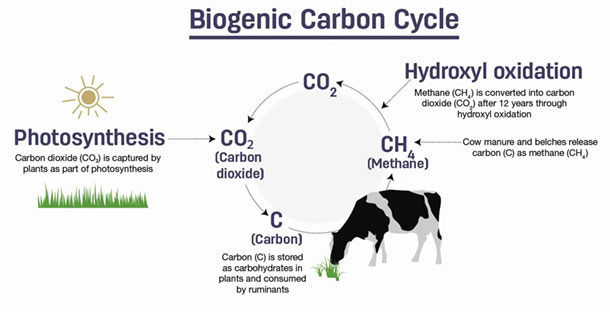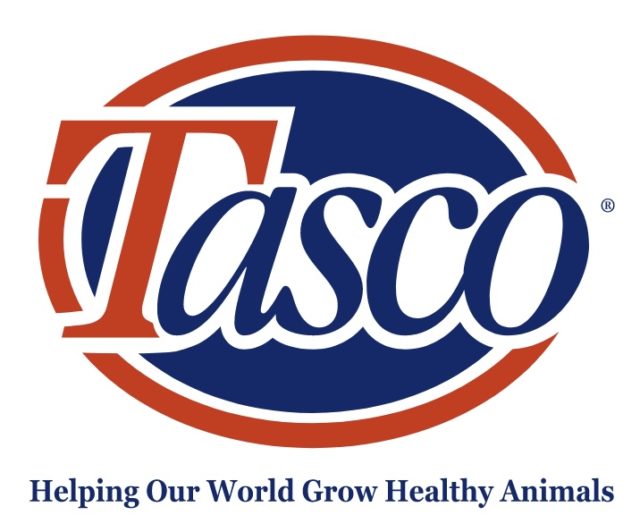Dr. Frank Mitloehner, a leading professor and air quality specialist, has a real beef with all the finger-pointing around cattle emissions.
“The notion that a change of diet would have a drastic impact on climate is completely overblown and, in my opinion, quite dangerous,” Mitloehner said. “It takes our attention from where that 800-pound gorilla sits, and that’s square in the area of fossil fuels.”
The professor of animal science at the University of California – Davis recently spoke to delegates at a virtual edition of the BC Dairy Association’s annual Nutrition Forum on the intersection of food and climate change. He noted that if a person were to switch from an omnivore to a vegan diet, studies show they would reduce their carbon footprint by around 1 tonne per year. But if they take just one trans-Atlantic flight during that time, they will not only cancel this reduction out completely, they will add another tonne of pollution into the air.
Reframing carbon emissions from cattle
Mitloehner brought up two key problems with the way cattle emissions have been portrayed: One, the way we measure greenhouse gases (GHG) is not realistic; and two, methane should not be treated as having the same impact on climate change as carbon dioxide (CO2).
“Every time you’ve ever driven a car or burned coal or gas,” Mitloehner said, “you’ve put out CO2 into the atmosphere, and that gas is still there throughout your entire lifetime – and that of your parents and that of your grandparents, and so on.” Methane, on the other hand, has an atmospheric lifetime of approximately one decade, very different from greenhouse gases like CO2 that are long-lived, with its half-life of 1,000 years.
When a cow belches out methane, not only is its emission made naturally of carbon from photosynthesis through the plants it consumes, the methane stays in the atmosphere for just 12 years before turning back into CO2 that can be used for photosynthesis, and another cow, again. “Without ruminant animals,” Mitloehner said, “we could not make use of grasses that grow on two-thirds of all agricultural land in the world.” This process is called the biogenic carbon cycle – emissions that come from natural sources.
But is this a good thing, considering the long half-life of CO2?
“The question is not [whether this is] a good or bad thing,” Mitloehner explained. “The question is: Is the carbon from our livestock new and additional carbon added to the atmosphere, causing additional warming?”
The answer to that question is no.
Moving beyond carbon neutrality
A working group from Oxford University under Professor Myles Allen supports the idea that we are treating methane the wrong way and has proposed a new unit of measure to look at how short-lived emissions like methane affect the climate. The group claims that the current GHG measurement overestimates livestock-produced methane’s warming effect and ignores methane’s ability to induce cooling when emissions are reduced.
“Our goal should be climate neutrality,” Mitloehner said, “not carbon neutrality.”
Mitloehner called the current GHG measuring system “the literal apples-to-oranges comparison,” where foods are weighed against each other despite having unique nutritional profiles. Beef production may have the highest GHG emission per kilogram at almost 60 times that of vegetables or fruit, but Mitloehner stressed this comparison is not realistic.
“A kilogram of beef is a very nutrient-rich food,” he explained. “A kilogram of apples does not contain an equal amount of essential nutrients.”
What’s more, the U.N.’s Intergovernmental Panel on Climate Change (IPCC) estimates that 70% to 80% of the environmental footprint of livestock occurs in developing or emerging countries. “These are not the numbers that apply to Canada or the United States; these are global averages,” Mitloehner explained, adding, “I have a real beef with that.”
The future of methane recycling
Agriculture and forestry accounted for 10.5% of all emissions in the U.S. in 2018, but they also created a reduction of 11.8%. This ability to be destroyed at almost the same rate it is emitted, along with its shorter lifespan, means that methane does not act like CO2 and therefore should not be compared as its equivalent.
“[These] are the only two sectors in society that have the capacity to actually provide a solution to a very important societal aspect,” Mitloehner said, “which is improving the climate.”
In California today, methane gas from some dairy cattle herds is being collected in covered lagoons and converted into renewable natural gas, creating the most “carbon-negative fuel type there is,” Mitloehner said. These innovative dairy producers have already reduced emissions by 25%.
While methane has sometimes been portrayed as “the dairy industry’s Achilles heel,” according to Mitloehner, simply blaming animal agriculture for methane emissions also downplays the contribution of plant-based foods towards greenhouse gases. For instance, plant agriculture emissions accounted for 0.6% of U.S. greenhouse gas emissions in 2017, while animal agriculture emissions actually accounted for less – just 0.5%.
Recycling methane from dairy farms into renewable natural gas not only offers farmers an additional source of income, it is helping displace the diesel fuel used in transportation. If this practice continues, within five to 10 years most of the dairy industry in California will be climate neutral, “meaning [the industry] will not affect temperatures on our planet,” Mitloehner said. “And that is the path I’m on.”
Founded in 1934, Dairy Farmers of Canada (DFC) is the national organization which defends the interests of Canadian dairy farmers and strives to create favourable conditions for the Canadian dairy industry. Working in accordance with supply management principles, DFC promotes safe, high quality, sustainable and nutritious Canadian dairy products made from 100% Canadian milk through various marketing, nutrition, policy and lobbying initiatives. Driven by a strong sense of community and pride, DFC and Canadian dairy farmers actively support a number of local and national activities. Visit Dairy Farmers of Canada for more information.











